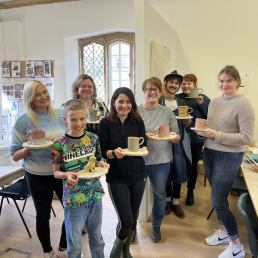A one day Seminar Exploring embedded approaches to place-based contemporary art practice.
Public involvement, conversation and the sharing of ideas are part of the natural vocabulary of OSR Projects and since 2011 we have produced contemporary art exhibitions and events that place artist led activity at the heart of our local community. The work we do from the OSR Project Space in rural Somerset, and further afield, crossing cultures, is a conversation starter; it engages people through its processes of thinking and making, as well as seeking out new and unexpected ways to have impact.
This seminar brings together leading creative practitioners to explore different approaches to embedding creative activity into the places where we live, work and play. The first part of the day consisted of presentations by our guest speakers followed by a series of workshops/provocations led by OSR Project associate artists/curators and a lunchtime tour of Dawes’ Twineworks by Ross Aitken (chair of the Coker Rope & Sail Trust).
Friday 4 December 2015
OSR Project Space, Church Street, West Coker, Somerset BA22 9BD

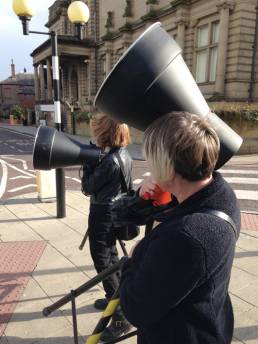
Sally Labern
Visual Artist and co-director of The Drawing Shed
The Drawing Shed is a contemporary arts organisation set up in 2009; It is led by visual artists Sally Labern and Bobby Lloyd who practice both collaboratively and autonomously, using diverse media and engaging with ideas led work around creating ‘communities of the imagination‘ and issues of resilience, resistance, commonality, class, and displacement. Based on two housing estates in Walthamstow, East London, from where they bridge on and off, the work is inter-generational and inter-cultural and involves diverse partners and communities which include teenage girls, boys, women, mixed gender adult groups and older people.
www.thedrawingshed.org/
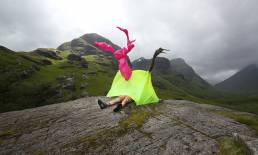
Alexander Stevenson
Artist
Alexander mines information using processes usually associated with anthropologists, historians and researchers to create artworks, journeys and films. Huge fabric sculptures, live theatrical performances and narratives generated from remote locations are just some of the outcomes of these interests. The work is informed by knowledge systems; how history is made and re-made through storytelling, objects and activities.
Past activity includes a residency at Karst in Plymouth, a major new work for the Bristol Biennial, a commission for GoMA as part of Glasgow International Festival, a commission for Grand Union in Birmingham, headlining The Arches Live Festival in Glasgow, and a major commission for the fringe of the British Art Show 7 in Nottingham.
Working with Glasgow based Unit 7 Alex has developed a series of artist residencies including taking five UK artists to Orkney to carry out unusual residencies in the landscape, including; a lighthouse, a beach on a golf course, and a bothy full of climbers.
www.alexanderstevenson.com
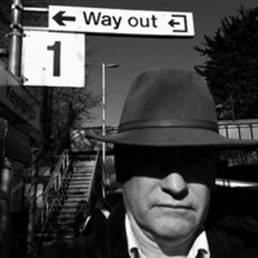
Owain Jones
Professor of Environmental Humanities; School of Humanities and Cultural Industries: Bath Spa University
Owain gained a PhD in Cultural Geography at the University of Bristol in 1997 and since then has researched and written about many aspects of nature-society relations, landscape, place, memory and the environmental crisis. He has conducted research projects on trees, place and landscape; floods, communities and memory; food chains and ecology; tidal landscapes; animals and society; and children, nature and place. His is currently leading a 1.5 million pound Arts and Humanities Research Council Connected Communities research project which involves eight UK universities, community partners and artists in four case study areas across the UK. This project is seeking to creatively explore and transform connections within and between communities, and communities and nature in relation to water issues. Owain was appointed as the first Professor on the Environmental Humanities in the UK in 2014 at Bath Spa University. He has published over 70 scholarly articles and two books – Geography and Memory: Identity, Place and Becoming (2012) with Jo Garde-Hansen; and Tree Cultures: The Place of Trees, and Trees in their Place (2002) with Paul Cloke.
Academia.edu/OwainJones
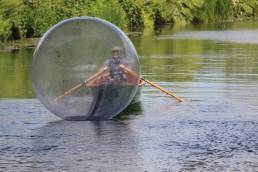
Jethro Brice
Artist
Jethro works across media and fields of professional practice, using found materials and borrowed languages to elicit layered histories of place. He works with other people in diverse contexts, to develop collaborative approaches for an unsettled future and a contested past.
Jethro studied environmental art at the Glasgow School of Art (2006) and was recently awarded an AHRC doctoral studentship at the University of Bristol, to develop a creative geography of change in the wider Severn estuary. With Seila Fernandez Arconada he produces Some:when , a participatory public art project conceived in response to flooding on the Somerset levels, initiated with a grant from the Somerset Community Foundation. Recent exhibitions include Unruly Waters (Parlour Showrooms, Bristol) and The Power of the Sea (Royal West of England Academy).
www.jethrobrice.com
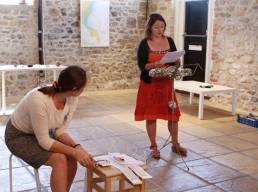
Sally Watkins
Co-Artistic Director and Curator- b-side Festival
Sally is a curator for b-side festival and a practising artist. Her interests are in site-specific practices and collaborations in place. She has worked as a commission manager for a number of years with artists working in the visual arts, live and performance and text based practice. Sally has mentored and supported early and mid artists, most recently with artists who wish to expand their practice from gallery to non-traditional spaces. She is currently interested in the collaboration and exchange between communities, curators and artists, and questioning where ownership and authorship reside.
http://b-side.org.uk/
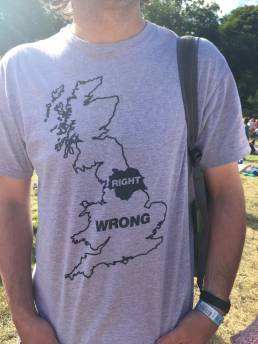
Tim Martin
Artist and curator at Hestercombe Gallery
Tim Martin is a Devon based artist/curator interested in collaborative practice with artists and audiences. Over the past two years Tim has curated a programme of exhibitions and events at Hestercombe Gallery that has included work by leading British artists including Tracey Emin, Mark Wallinger, Mark Quinn, Gavin Turk, Adam Chodzko and Bill Woodrow. Being particularly interested in how Hestercombe can contribute to the visual arts ecology of the South West he is has developed a programme of residencies and seminars that run alongside the exhibitions and have become an integral part of the programme.
Tim’s artistic practice currently involves moving image, context based work, sculpture, drawing and painting and making work through engagement with others. His practice is concerned with the natural world and man’s relationship to it with inspiration being drawn from journeys made in the landscape, specific sites or issues.
www.timmartin.com

Notes from the Invisible Landscapes Seminar – Deborah Westmancoat
The Invisible Landscapes one day seminar at OSR, West Coker, Somerset on Friday last week was really interesting. The premise was ‘exploring embedded approaches to place-based contemporary art practice’. Simon Lee Dicker introduced the day with a short explanation of the work of OSR Projects which led into Sally Watkins, Co-Artistic Director and Curator of b-side festival, speaking on their engagement-based residency work on Portland and how they aim for the academic and the ‘real world’ to co-exist meaningfully within the island environment and community. Owain Jones, Professor of Environmental Humanities at Bath Spa University followed with a rousing lecture on the need for us all to re-imagine what we are, what our community could be like and how we can exist positively within the natural world. He challenged the artists in the room to make change through their practice, stating that “modernist science won’t do it….abandon scientific paradigms and return to transforming the world through art and philosophy….an ongoing aesthetico-existential process…”. He is currently involved in a project, Water City Bristol, which seeks to ‘connect people with water and through water’….proposing that the state of a community’s water systems “palpably and vividly shows our ecological condition” and that “unloved rivers = unloved communities, places where ecocide runs amok”. It was an energetic and powerful discourse on the need for change, and how we as artists might take a lead on this, and I have certainly thought much more over the last few days about the drive for what I do and the reasons why I work with water specifically. The afternoon brought a site visit to the wonderfully atmospheric and haunted Dawe’s Twineworks and an engaging talk by Sally Laburn, Visual Artist and Co-Director of The Drawing Shed, an artist based project based in London seeking to work with an unheard resident community amidst local development. Sally ended by posing a question (a quote from Lucy Lippard) which really stuck with me – “I wonder what will make it possible for artists to ‘give’ places back to people who can no longer see them”. The last part of the day was devoted to a choice of three workshops run by Alexander Stevenson ‘The Artist as Explorer’ micro-residency, Jethro Brice ‘An Exercise in Deliberate Anthropomorphism’ and Tim Martin ‘Artists: Useful or Useless?’. I wanted to do all of them but chose the micro residency option and spent a very amusing hour with my team, including Gordon Field and Morag Kiziewicz, making a one hour performance-based residency art piece about the noise and danger of traffic through West Coker. Great fun….but the group working with Jon England made a very evocative and memorable piece in the local church, focusing on unpulled bell-ropes and a ticking church clock in the silent tower, and I still have hairs rising on the back of my neck just thinking about it. Thanks to everyone at OSR for a really thought-provoking day.
Review by Sara Bowler
What lies hidden in a place? And how do we engage with it? These were the questions that first entered my mind when I read of OSR’s seminar, ‘Invisible Landscapes’, held early in December 2015 at their Project Space in West Coker, Somerset. Attended by 52, it was completely sold out indicating that many others were attracted to the theme. We were not disappointed; the event ran brilliantly, presenting three fascinating speakers and a choice of workshops, a visit to the atmospheric Dawes’ Twineworks culminating in a closing summing up.
My attraction to the seminar lies in my exploration of the ‘palimpsest of place’ through a series of projects begun in 2003, culminating in the most recent, ‘Goonhilly Village Green’, held on Goonhilly Downs, near Helston, Cornwall in September 2015. I am fascinated by the stories held in places, particularly those deemed redundant, derelict or of little immediate appeal. Scratching the surface will always reveal something of its former uses and users, whether found through archaeological research, recorded in archives, or held in a person’s memories. Tapping into these ‘bodies of knowledge’ enables me to work with a wide spectrum of collaborators, from professionals to local residents. I had high expectations of the day and was delighted to have been a participant.
Described as a ‘one day seminar exploring embedded approaches to place based contemporary art practices,’ the event presented a wide ranging examination of the ways artists and others engage with place. First up was Sally Watkins, a Co-Director of b-side festival, held biennially in Dorset. She introduced us to the history of the festival, which was piloted in 2008 as a cultural element of the sailing Olympics in Weymouth. Set up by Alan Rogers in 2007, the festival became a NPO of Arts Council England in 2012. The six person team all work part time and are active as independent artists, bringing a range of experiences to the event, essential as it relies on an open call to artists to submit site responsive proposals and an extensive body of volunteers to help deliver the projects. Since 2014, they have concentrated their efforts on Portland, an island connected to the mainland by a causewayed road. The town and island have distinctive histories and stories to tell, generating complex and involved responses from artists.
Watkins sees the festival as the means to collect and present disparate ideas about what makes Portland what it is, posing the question ‘Why does a single place generate such a range of responses?’ For me, this lies in the layers of time every place holds, from the geological to the personal, revealing rich seams to mine for inspiration. The other key element of the Festival is how the work will engage audiences, whether residents or visitors; b-side works hard to ensure people can experience the work. Selected artists need to address this in their proposals but do not necessarily have to have a socially engaged practice. This is where the volunteers often help, as they are briefed and prepared when taking visitors around the sites. Watkins stressed the need for negotiation with local communities to access places and specialist institutions such as churches or the prisons on the island. This takes time and sensitivity and is something I regularly experience when working in offsite situations. Accessing others’ knowledge and experience is a privilege and raises the question of how we use this information. As artists, we can do anything we wish with it, but how does that make those we are working with feel? And how does repeatedly working with the same environments and landscapes avoid duplication of ideas and draining volunteers of their energy? Citing Fiona Wilkie, a writer investigating ideas of site, Watkins suggested ‘it was not a case of retelling the same story but of finding incongruous ways of revealing it.’
Owain Jones, Professor of Environmental Humanities at Bath Spa University spoke next, considering what he believes to be our slow industrial genocide as a result of mass consumerism in the West. He drew our attention to what is invisible to most of us in the environment, the loss of biodiversity over the past 70 years. In citing Guattari’s seminal book, ‘The Three Ecologies’ (1989), he drew our attention to how cultural and psychic ecologies are being lost too as a result. He believed art can question and challenge, that aesthetic and creative approaches are needed to raise awareness and action. The environmental humanities are attempting this but need practitioners to implement these challenges. He believes we need to rethink what humans are and how they live on the planet, that these environmental stories can be told in ways that will enable people to engage. He did not believe conventional politics can address these issues as they are on a global scale, requiring completely different strategies. He noted that Ecuador, one of the poorest countries on the planet, has produced nature rights and rewritten its constitution to reflect this. His talk went on to consider his current research into water as the likely next major cause of global conflict as it comes under increasing pressure. His recent Big Blue Map of Bristol project aimed to raise awareness of water in and under the city.
Jones’ talk made me think about these ‘invisible landscapes’, the things that are being lost from under our noses but also, predominantly out of sight, reminding me of the old saying, ‘out of sight is out of mind’. But I also question if it is art’s role to be instrumentalised for such purposes? Does this simply make art propaganda? And if so, what are the implications for the artists working in this way? Can artists really change the course of politics or do they primarily reflect what is happening? I feel these questions warrant deeper consideration than is possible here and suspect that any discussion would ultimately fall to either side of belief systems ie those that believe art should be used for such purposes and those that don’t.
The final speaker, Sally Labern, Director of the Drawing Shed, described how she set up the project following an experimental work at Tate examining the realities of light poverty for large percentages of the global population. By limiting how long light was available, it drew attention to the limited availability of artificial light in developing countries and the impact this has on health, education and social exchange. The Drawing Shed aims to reflect the lives and aspirations of those who are often invisible in environments, those with limited incomes and social networks. Working from three garages in E17 in London, the project began by asking older residents to describe their earliest memories of play counterposed with their earliest memories of work to create the piece, ‘Echo Chamber’. This drew the community to the project space in an unthreatening way and opened doors to further work with younger residents. She uses this approach to give places back to people who can no longer see them, citing Dave Beech and the Freee Collective’s approach to working in the public arena. While I question the idea of using art instrumentally, I found the Drawing Shed’s approach invigorating. The work was strong in its own right while clearly growing out of a collective and collaborative process.
After a wonderfully hearty lunch in the local pub, we had the opportunity to visit Dawe’s Twineworks in the village. Simon Lee Dicker had established a working relationship with those renovating the works and undertaken a residency there in the preceding months. The works are believed to be the only working 19th Century twine works left in the country and had fallen into serious disrepair before a committed group of enthusiasts set about renovating the building and machinery. OSR projects are hosting a series of residencies at the Twineworks during 2016. Wandering through its open structures and pondering how it would have looked and sounded when it was last operational was a powerful experience and clearly animated all of those on the tour.
We then joined one of the three workshops on offer. I opted for the 60 minute Residency devised and led by artist Alex Stevenson. The other two sessions were led by Jethro Brice and Tim Martin. Brice explored the thinking powers of mud with participants, creating drawings and gestural responses while Martin’s group considered if art is useful or useless, producing a short film, Skitless, essentially, skittles without the skittles, just the balls!
Stevenson’s mini residency was both interesting and challenging. We divided into four sub groups and were presented with detailed instructions, broken down to the minute, of how to conduct ourselves. Needless to say we ignored most of these, selecting only the things that interested us! My group elected to explore the church as the locus for our residency and surprised ourselves both in what we could draw on as a collective and what we discovered in a short space of time. Our final task was to present a mini private view for the other groups. We hastily improvised with a series of found objects, creating a surprisingly memorable installation in the Bell Tower in the church. This intensive, collaborative approach was enlightening and one that could easily be adopted in future situations.
Returning to OSR, we shared what each workshop had done with the whole group before final thanks were shared. It was a thought provoking, enjoyable and well-paced day. I look forward to more from OSR.
Sara Bowler, 17 January 2016
Artist and Director, ALIAS
www.sarabowler.info
www.aliasarts.info



